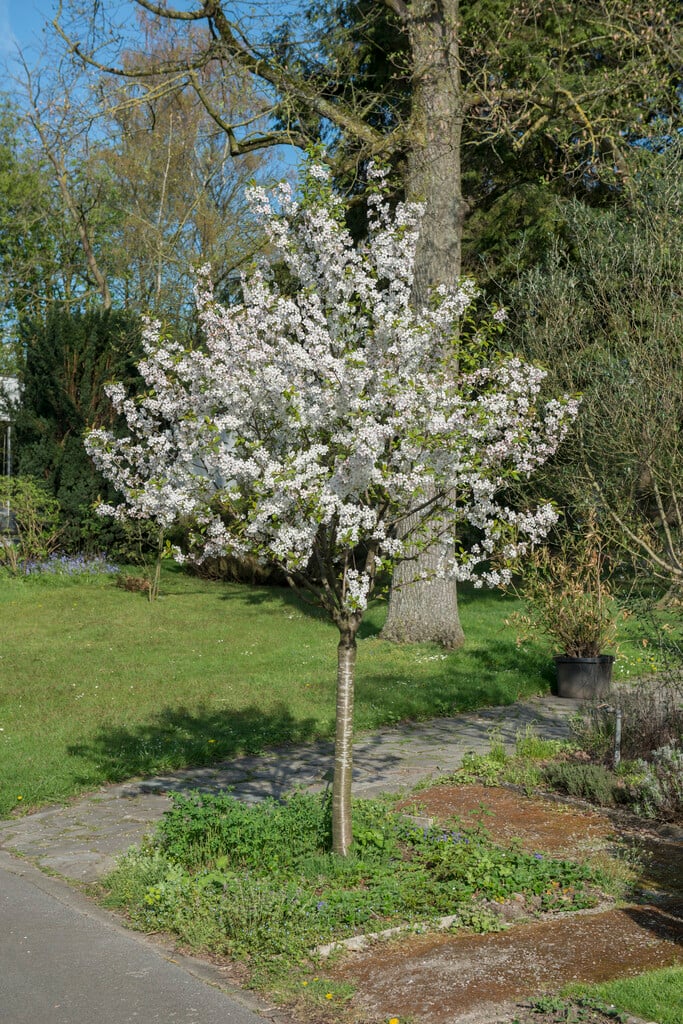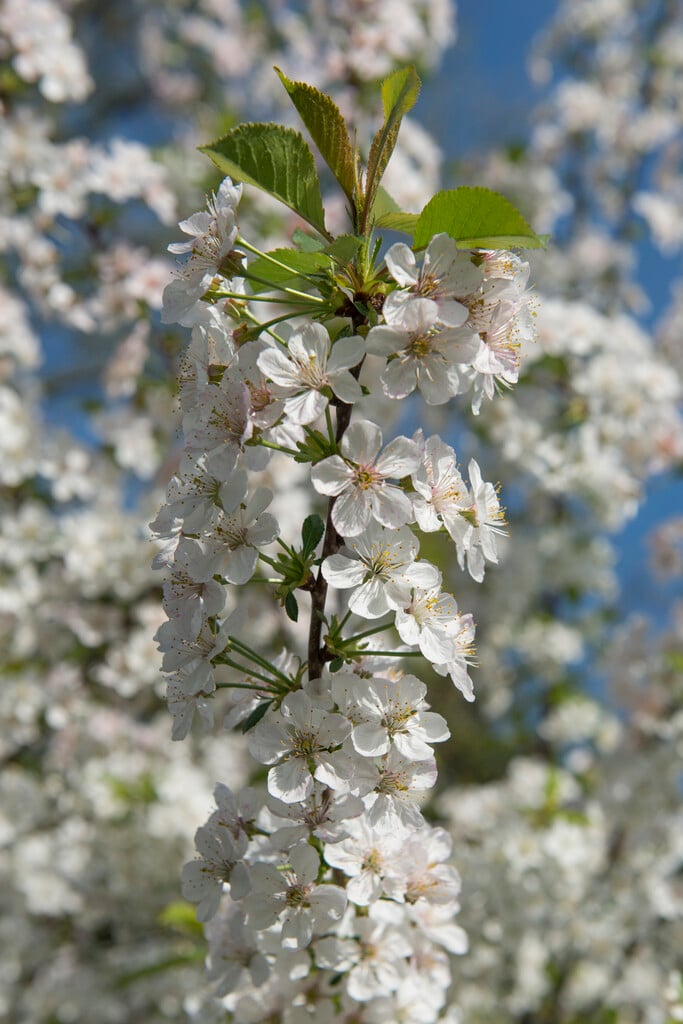Prunus cerasus
morello cherry
A small, bushy, deciduous tree which may develop into a shrubby, suckering thicket, to around 5m. Has thin, dark branches, shiny, red-brown bark, and glossy, deep green leaves up to 8cm long. In mid- to late spring produces dense clusters of pure white flowers, followed by soft, juicy, sour, red or black cherries. One of the parents of morello cherries
Size
Ultimate height
4–8 metresTime to ultimate height
10–20 yearsUltimate spread
4–8 metresGrowing conditions
Moisture
Moist but well–drainedpH
Acid, Alkaline, NeutralColour & scent
| Stem | Flower | Foliage | Fruit | |
| Spring | White | Green | ||
|---|---|---|---|---|
| Summer | Black Red | |||
| Autumn | Green | |||
| Winter |
Position
- Full sun
- Partial shade
Aspect
South–facing or West–facing or East–facing
Exposure
Exposed or Sheltered Hardiness
H6Botanical details
- Family
- Rosaceae
- Native to GB / Ireland
- Yes
- Foliage
- Deciduous
- Habit
- Bushy, Spreading branched, Suckering
- Potentially harmful
- Seed kernels harmful if eaten, wear gloves and other protective equipment when handling Pets (dogs, rabbits, rodents): Harmful if eaten - for further information and contact numbers regarding pets, see the HTA guide to potentially harmful plants
- Genus
Prunus can be deciduous or evergreen trees or shrubs with showy flowers in spring, and often good autumn foliage colour. Some have edible fruit in autumn, and a few species have ornamental bark
- Name status
Correct
How to grow
Cultivation
Grow in deep, moist, fertile soil preferably in full sun
Propagation
Propagate by seed sown in containers outdoors in autumn; or by softwood cuttings, with bottom heat, in early summer
Suggested planting locations and garden types
- Cottage and informal garden
- Wildlife gardens
- Edible fruit
Pruning
Pruning group 1, ideally in summer to reduce the risk of silver leaf infection
Pests
May be susceptible to aphids and caterpillars
Diseases
May be susceptible to peach leaf curl, silver leaf, bacterial canker, blossom wilt and honey fungus. High Risk Host for Xylella fastidiosa
Love gardening
Sign up to receive regular gardening tips, inspiration, offers and more
View our Privacy Policy
Get involved
The Royal Horticultural Society is the UK’s leading gardening charity. We aim to enrich everyone’s life through plants, and make the UK a greener and more beautiful place.

